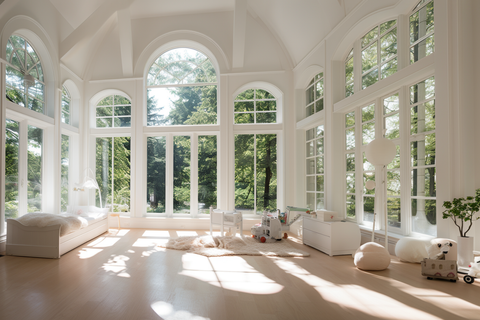Crafting a Haven: Mom's Quest for Non-Toxic, Eco-Friendly Furniture
As a devoted mom, the quest for a safe, non-toxic, and environmentally friendly home is a mission close to the heart. Choosing the right furniture is a crucial aspect of creating a healthy living space for our families. Join me on an in-depth exploration, as we unravel the layers of what truly makes furniture healthy and sustainable.
Unveiling the Essence: Understanding Furniture Health
Furniture is not merely about aesthetics; it's about the air we breathe and the environment we create within our homes. Let's delve into the key aspects to consider when evaluating the health of your furniture.
1. Decoding Composition: The Heart of Natural and Sustainable Sofas
In a world filled with composite materials, it's essential to adopt a mindful approach, similar to scrutinizing the ingredients in our food. Complex materials often harbor harmful additives such as chemicals and glues, significantly impacting indoor air quality. The solution lies in embracing simplicity. Our sofas, for instance, proudly boast 100% natural and certified raw materials, free from any harmful compounds. Let's prioritize not only the comfort of our sofas but also the health they contribute to our indoor spaces.

2. Tracing Origins: The Journey of Materials in Healthy Furniture
The origin of materials used in furniture plays a pivotal role in determining its environmental impact. The challenge arises when large furniture producers outsource production, making it difficult to trace the origin of materials. Reliable eco labels come to our rescue, providing transparency and control. Labels like FSC (Forest Stewardship Council) and PEFC (Forest Certification Recognition Program) ensure responsible practices, from harvesting to working conditions. By choosing furniture adorned with these trustworthy labels, we contribute to a sustainable and transparent supply chain.
3. Decoding Eco Labels: A Guide to Reliable Certifications
Eco labels serve as a compass in the vast sea of choices, guiding us towards environmentally responsible options. Let's delve deeper into the significance of key eco labels:
- FSC (Forest Stewardship Council): Guarantees responsible forestry practices, ensuring the conservation of forests and wildlife.
- PEFC (Forest Certification Recognition Program): Focuses on sustainable forest management, promoting biodiversity and maintaining the ecological balance.
- Oeko Tex (Textiles): Certifies that textiles are free from harmful substances, ensuring they are safe for human use.
- RDS (Responsible Down Standard): Ensures ethically sourced down and feathers, prioritizing the welfare of ducks and geese.
- Eurolatex: A certification for latex products, assuring quality and environmentally friendly production.

The Journey Continues: Delving into Social Sustainability
Beyond the physical product lies a crucial aspect often overlooked – the people involved in the production process. Let's unravel the layers of social sustainability and its impact on our furniture choices.
1. Assembling a Better Future: Where and How Furniture Is Made Matters
The assembly process of furniture is as significant as the materials used. Large companies frequently outsource production to regions with challenging labor conditions. The key is to choose brands that take responsibility for their entire supply chain. Robust policies, codes of conduct, and regular inspections ensure fair labor practices, preventing issues like modern slavery and child labor. By making informed choices, we contribute to a more just and ethical industry.

Empowering Choices: Beyond Furniture to a Healthier Lifestyle
Armed with knowledge, moms can be powerful advocates for healthy and sustainable living. The journey doesn't end with choosing eco-friendly furniture; it's about fostering a lifestyle that aligns with health, sustainability, and mindful choices.
In Conclusion: Crafting a Future-Focused Home
Choosing healthy and sustainable furniture is not just a decision; it's a statement. It's a commitment to the well-being of our families and the planet. Let's continue to explore the world of eco-friendly labels, transparent sourcing, and social responsibility. Together, we can craft homes that resonate with health, sustainability, and mindful living.
Join the movement towards a healthier, eco-conscious lifestyle today!